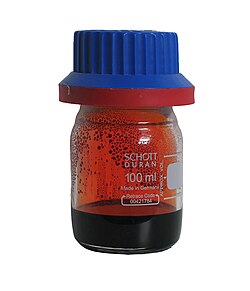

Quote: Originally posted by hkparker  |







Quote: Originally posted by peach  |
Quote: Originally posted by bob800  |
Quote: Originally posted by thethule  |
Quote: Originally posted by Sedit  |

 It was a mess to clean so be careful storing halogens.
It was a mess to clean so be careful storing halogens. 
Quote: Originally posted by thethule  |
Quote: Originally posted by Benignium  |
Quote: Originally posted by clearly_not_atara  |
Quote: Originally posted by woelen  |
Quote: Originally posted by mr_bovinejony  |
Quote: Originally posted by draculic acid69  |

Quote: Originally posted by draculic acid69  |

Quote: Originally posted by Rutherford  |